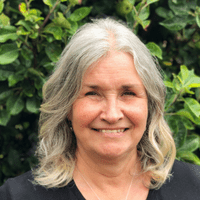WEBINAR DEEP DIVE
Slips, trips and falls – emerging issues and methods of prevention
A recent SHP webinar around the issue of slips, trips and falls (STF) threw up a host of questions from our audience. Here, the panellists from the event respond to those queries we couldn’t tackle on the day.
The SHP webinar, Slips, trips and falls – emerging issues and methods of prevention, in association with RoSPA, attempted to reframe the sector’s approach to slips, trips and falls after recent research from RoSPA and the RSA revealed a worrying lack of awareness around the issue.
The event was extremely well attended and we received an array of fascinating questions from attendees throughout, however, our restricted time meant we were unable to respond to all of the queries that came in from the audience. We kept all of these on file and sent them on to our speakers (listed below) who cherry-picked some to answer and we include their responses here.
Q: Is it enough to allow an employee to assess the risks in their own home or should line managers be visiting to carry out assessments?
(KM): HSE guidance on Managing Home Worker Health and Safety is clear in that it highlights that as an employer, you have the same health and safety responsibilities for people working at home as for any other worker. This applies whether employees work at home on a long-term basis or have a hybrid working pattern. Irrespective of working patterns, home working should be underpinned by a risk assessment. Engaging with home workers to identify hazards and risks within their environment, how to use equipment safely and the wellbeing impact of stress and poor mental health as a consequence of home working.
The engagement process will help identify whether they have an appropriate place to work or may prefer to come into the workplace for wellbeing, mental health or other reasons. HSE encourage a balanced and proportionate approach to managing home workers’ health and safety. Stating that ‘in most cases, you do not need to visit to ensure their health and safety, but you should make sure they have a healthy and safe environment to work in.
A home visit is suggested where the employee has a disability and has particular needs; or the work activity includes any significant hazards like tools or chemicals; to meet any special requirement, such as for a worker with a disability and if the work activity includes any significant hazards like tools or chemicals.
The key to success is keeping lines of communication open to reduce the sense of isolation
HSE suggest:
- providing advice and guidance on their home working set-up;
- using questionnaires or self-assessment tools;
- regular phone or video calls.
Note that when the risk assessment highlights actions you need to take, your employees cannot be charged for this.
(AH/JR): Employers are required to assess the risks of homeworking and often use checklists or questionnaires for homeworkers to complete that may contain questions relating to display screen equipment, workstation set-up, slip trips and falls, electrical safety, fire safety, psychosocial risks and so on.
Responses will then be reviewed by managers, health & safety or human resources teams. There may be issues raised that can be easily resolved by giving advice, providing suitable equipment, or identifying additional training or support needs. In cases like these, the employer would not need to visit an employee at home. However, there may be circumstances where a visit is appropriate to support an employee, for example, if they require an ergonomic assessment or need support with poor mental health.
Employers should document management arrangements around home working and keep records of all individual risk assessments and outcomes, providing a full audit trail of actions and interventions. Training should also be provided to homeworkers to enable them to identify risks at home and empower them to make changes.
Do you believe the sedentary impact OF Covid-19 and the subsequent lockdown has influenced the frequency of STF since returning to the ‘new normal’?

Dr Karen Mcdonell, OHS Policy Adviser at RoSPA.
(KM): The RSA report asked the following question regards STF and Covid 19 and I quote from that report…
“Our decision makers cohort strongly indicated that the COVID-19 pandemic did not increase STF in their workplaces. Only per cent agreed that STF increased, and 78 per cent disagreed. This was confirmed with the cohort where 63 per cent stated there is not an increased likelihood of STF due to the pandemic. (8 per cent said they believed an increase was likely or very likely).”
“The pandemic was not thought to increase the incidence of falls and was believed to have reduced it. There has been no mention or recognition of deconditioning from more static work practices.”
“The workshops indicated that there was no clear belief that the pandemic has increased falls and some thought falls would have reduced. There is possibly an underlying misconception or misunderstanding of working at home being a workplace or an employer’s safety issue. ‘Participants agreed that it was the employer’s responsibility to make a decision about how far they would go to protect an employee’s safety at home, and if they would provide certain equipment and measures to make their home working environment as safe as possible’.”
Further data from HSE on this period is outlined in Craig McLaughlin’s section of the presentation. You can view the webinar here.
Issues around STFs seem to centre around an incident occurring rather than looking at hazards. This hazard is always there but no one complains until an STF occurs. How do we go about changing this attitude?

Jules Robinson, Customer Health & Safety Advisor at Trent & Dove Housing

Anna Hickman, Head of Health & Safety (People And Property) at Trent & Dove Housing
(KM): Re-emphasising the importance of being situationally aware, encourage staff to be aware of their surroundings so they can recognise hazards. Link these hazards to the potential of a slip trip or fall and react accordingly. In the waste industry the Energy Services Association are tackling situational awareness from a strategic perspective , slips trips and falls are included in the conversation about three points of contact . ESA use the following definition to encourage and engage with staff ‘Situational awareness is continuously assessing your surroundings, identifying any potential hazards which will inform your decision making on how to carry out your work safely.
(AH/JR): This is really a question of safety culture which is the culmination of individual and group values attitudes, competence, perceptions and behaviours that determine the commitment to, and effective implementation of, an organisation’s health & safety management system. Some actions that could be taken in this scenario are:
- Equip people with the skills and knowledge to identify slip, trip and fall hazards, using case studies/materials that are relevant to their workplace. In training/tool box talks, encourage open dialogue for people to share experiences, talk about previous accidents and near misses and identify solutions or prevention techniques;
- Provide people with a clear framework for reporting near misses and hazards;
- Create a feedback loop – ensure all reports are actioned and this is communicated so employees feel listened to;
- Make the reporting process easy and accessible for employees – consider employees capabilities and preferences, e.g. it may be easier for remote employees to report electronically but site-based staff might prefer a paper form, so have both;
- Set targets for teams on number of reports – targets drive behaviour and a bit of healthy competition between teams or departments may boost report numbers;
- Celebrate and reward the right behaviours. When reports lead to improvements, share and communicate. You could also provide rewards such as shopping vouchers to individuals or breakfast butties for teams.
- Some organisations have annual safety awards for employees – great if you can get the leaders involved and advocate for health & safety improvements.
- Be aware of initiatives like Fall Prevention Week – these can provide great timing for the launch a promotional initiative or training delivery.
Are preventative measures just perceptions or actual examples of successful strategies?
(KM): Getting people’s agreement about how safe things need to be is that our is often patchy and compartmentalised. This is because risk perception is just as variable as risk acceptance. For example, we can be very concerned about worrying, but in reality quite remote risks, like “stranger danger” for children or possible health effects from certain foodstuffs but quite relaxed about much bigger risks like those associated with road traffic, trampolines, barbecues or handling hot liquids.
The RSA report suggests that STF are ‘part of the picture’, 51% of decision makers think that STF are ‘inevitable’.
People’s perceptions of risks are influenced by factors such as whether their effects are likely to be ordinary or catastrophic, immediate or delayed or whether they affect individuals or society generally. They are also affected by whether the hazards involved are:
- natural or man made;
- familiar or unfamiliar;
- controllable or uncontrollable;
- whether exposure to them is voluntary or involuntary or involves some benefit.
The way people feel about risks is also heavily influenced by the extent to which they trust the judgement of experts. Some people argue that not all accidents are preventable. Investigation of accidents however (even with hindsight bias) shows that key factors determining preventability include: foreseeability of risk; availability of adequate control measures; and barriers to their application and maintenance.
Others in ‘safe’ organisations may argue that the scope for reducing accidents through action at source of hazards and through better organisation is exhausted and reliance has thus to be placed on behavioural safety and error reduction. But this is not always confirmed by the results of structured investigations that examine immediate and underlying causes in some depth. There is usually scope for better preventive action at many points.
I think one of the biggest challenges is when STF happen outside the controlled work environment (a remote workforce) although with a small management team it is difficult to control. I know training and communication are key but do you have any other advice?
(KM): Encourage teams to Pause, Reflect and re-set around the topic of STF. Encourage reporting of STF, perhaps the slip from the edge of the kerb, or as they get in and out of vehicles. Situational awareness is key, and supporting this with a falls prevention programme, however within the RSA report it is stated that only 31% of respondents had one in place a risk management gap that should be closed.
Did the RSA report look at the effect of STF on memebers of the public?
(KM): The research scope was defined to enable RoSPA and RSA to add to the existing pool of evidence relating to workplace slips, trips and falls (STF) by exploring new, emerging issues. We considered COVID related issues, the UK ageing workforce, any potential link between fatigue and falls and the impact of falls and looked to explore emerging themes that presented through the activity.
The study was set-up to achieve the following outputs:
- Headline statistics which will inform attitudes and behaviours to falls;
- Falls-related event, showcasing a fresh approach and understanding;
- Creating a platform for people to talk about their lived experience of falls and the ‘fall-out’ from a fall, such as caring responsibilities for older relatives;
- Case studies of how organisations manage the impact of falls;
- Further promotion of Fall Fighter scheme.
Members of the public linked to the report through questioning about absence from work as a consequence of caring responsibilities associated with STF.
What is causing managers’ laid-back attitude to this issue?
(KM): I suggest that STF are viewed as minor inconveniences as opposed to accidents that don’t need to happen. Also, a failure to recognise the impact of absence on the profitability of the organisation, impairment as a consequence of STF reduces the value that people add to organisations which in turn impacts on sustainability.

Craig McLaughlin, UK Casualty Lead at RSA
Most STF advice focuses on management of the workplace – what advice is available for organisations that do not work in such an environment – such as Royal Mail or organisations that have a peripatetic workforce working in public areas and domestic premises that are beyond their control?
(CM): Once a worker is away from their normal place of work visiting different sites, areas and environments for example a formal risk assessment approach needs to be adopted.
The HSE identify risks including:
- working alone;
- late, evening and night shift work;
- working in confined spaces;
- violence towards staff;
- safe use and maintenance of tools and equipment.
Risk assessments need to be undertaken by a suitably competent person with involvement from the worker. It is important to understand the potential risks and to identify suitable control measures. In reality it is not practical to identify all risks away from the workplace, however.
Where this is not possible the use of a generic risk assessment can be helpful. It is vital that the workers involved fully understand the risk assessments and associated procedures. There must be a facility for the workers to undertake a dynamic risk assessment for areas, risks or environments they may come across. Slips, trips and fall risk areas should be specified.
Procedures need to be in place for a worker to contact their employer, manager or supervisor to report and discuss any risks they identify on site that they are nor familiar with including potential emergency situations that may arise. By involving workers, it may be that known risk areas already exist based upon the previous experience of the workers. This type of information can be very useful as part of the risk assessment process.
As with all risk assessed procedures formal ownership and a continually review regime must be in place. Workers may require training re dynamic risk assessments for example; this should be via a formally documented signature of receipt and understanding basis. New employees will need to be considered along with temporary or agency workers and/or any workers who have little or no English language skills.
Are any environmental audits used to determine common factors in STF and what have you found as a result? Does this impact future design of housing?
(KM): The Safer by Design framework to reduce serious accidental injury in new-build homes, provides insights into RoSPA’s work in this area. The Safer Stairs campaign builds on this as RoSPA campaigns for a change in stair design.
Where applicable, do STF risk assessments include input from Estates with regards to measuring the surface roughness of floors, on installation and as they age?
(KM): HSE guidance on STF highlights the importance of considering all aspects of the environment, implementing control measures then reviewing. Should floor surface should be included in this process?
I work in retail and real estate and look at incidents attributed to slip trips and fall to members of the public, did the study identify methods of prevention in such environments
(KM): The risk assessment for areas where members of the public can gain access should include the potential for STF and their impact.
You can watch a recording of the webinar here. It is part of SHP’s Webinar Wednesday series – click here to find out more about this suite of resources.
Read Dr. Karen Mcdonnell’s blog on the subject of STF here.
Slips, trips and falls – emerging issues and methods of prevention
A recent SHP webinar around the issue of slips, trips and falls (STF) threw up a host of questions from our audience. Here, the panellists from the event respond to those queries we couldn't tackle on the day.
Mark Glover - SHP Editor
SHP - Health and Safety News, Legislation, PPE, CPD and Resources Related Topics
Company fined as worker has leg amputated
Aviation company fined after worker death at Heathrow Airport
Gogglebox star George Gilbey died after fall through skylight




